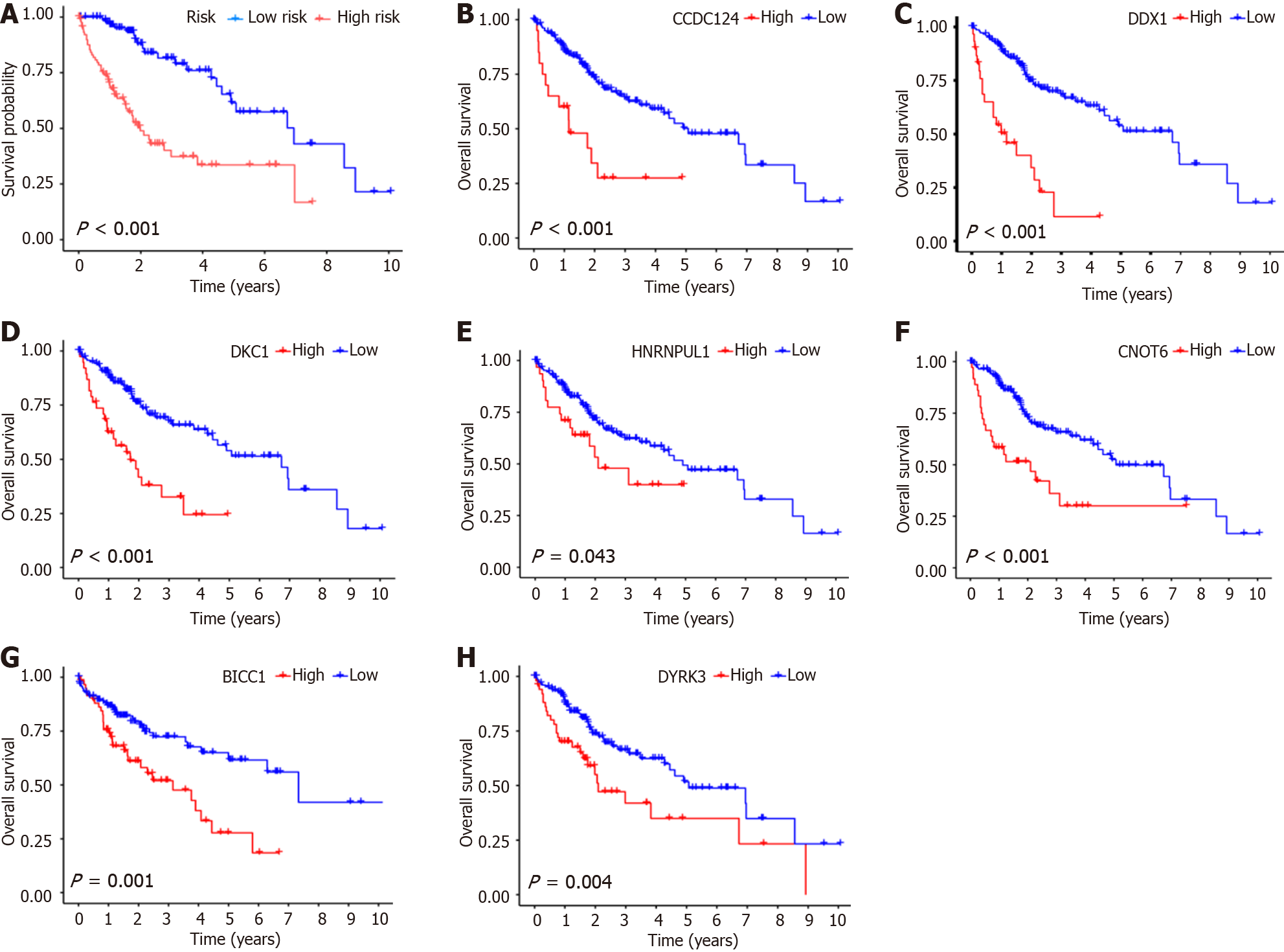Copyright
©The Author(s) 2024.
World J Gastrointest Oncol. Jun 15, 2024; 16(6): 2571-2591
Published online Jun 15, 2024. doi: 10.4251/wjgo.v16.i6.2571
Published online Jun 15, 2024. doi: 10.4251/wjgo.v16.i6.2571
Figure 3 Survival analysis of high- and low-risk groups and hub genes in train group specimens according to The Cancer Genome Atlas-Liver Hepatocellular Carcinoma, GSE25097, and GSE36376 combined datasets.
A: Survival analysis of risk scores for train group samples. Red is indicative of high-risk group samples, and blue is indicative of low-risk group samples; B: Survival analysis of CCDC124 in train group samples. Red is indicative of high-risk group samples, and blue is indicative of low-risk group samples; C: Survival analysis of DDX1 in train group samples. Red is indicative of high-risk group samples, and blue is indicative of low-risk group samples; D: Survival analysis of DKC1 in train group samples. Red is indicative of high-risk group samples, and blue is indicative of low-risk group samples; E: Survival analysis of HNRNPUL1 in train group samples. Red is indicative of high-risk group samples, and blue is indicative of low-risk group samples; F: Survival analysis of CNOT6 in train group samples. Red is indicative of high-risk group samples, and blue is indicative of low-risk group samples; G: Survival analysis of BICC1 in train group samples. Red is indicative of high-risk group samples, and blue is indicative of low-risk group samples; H: Survival analysis of DYRK3 in train group samples. Red is indicative of high-risk group samples, and blue is indicative of low-risk group samples.
- Citation: Ren QS, Sun Q, Cheng SQ, Du LM, Guo PX. Hepatocellular carcinoma: An analysis of the expression status of stress granules and their prognostic value. World J Gastrointest Oncol 2024; 16(6): 2571-2591
- URL: https://www.wjgnet.com/1948-5204/full/v16/i6/2571.htm
- DOI: https://dx.doi.org/10.4251/wjgo.v16.i6.2571









